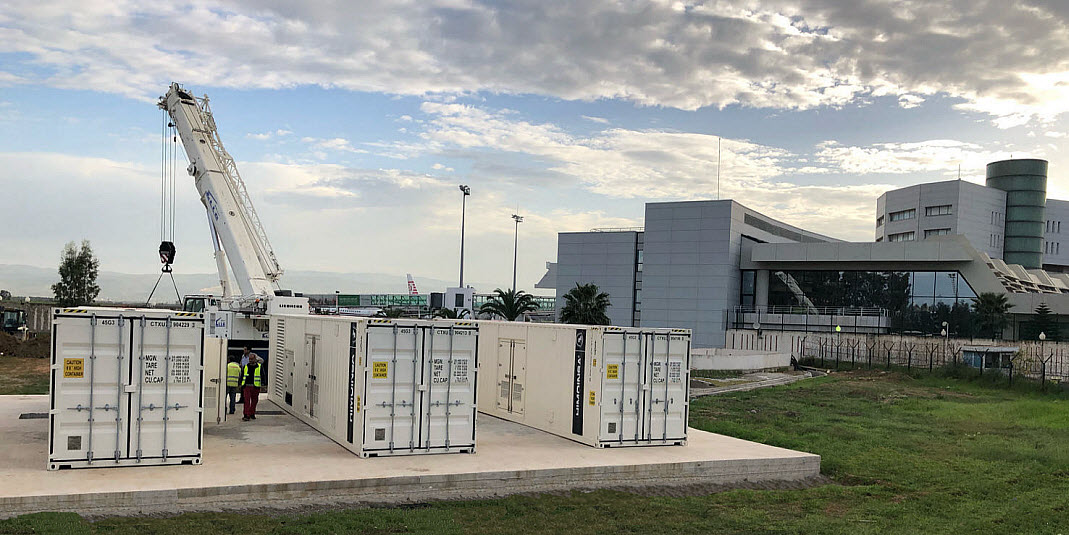
Location: Algiers Airport (Algeria)
Installed power: 7,875 kVA on stand-by
Generator sets:
1 HTW-2030 T5 unit, 4 HTW-1030 T5 units, 1 HTW-1030 T5 unit with a built-in load bank and 1 HTW-670 T5 unit
Special configuration: Stand-by generator sets with a redundant control system for the generation of emergency power in critical infrastructures, a built-in load bank inside the container of one of the gensets and tanks with a fuel capacity of 3,000 litres.
HIMOINSA Distributor: SARL Globale Realisation.
6.3 MW of emergency power in Algiers Airport
Opened in 1924, the Houari Boumediene Airport is the largest and most central airport to Algeria’s capital, Algiers. It offers connections to the world’s most important airports, and its privileged location on the edge of the Mediterranean Seakes it one of the gateways to the African continent. More than 7.5 million passengers pass through its facilities each year, with more than a hundred flights operated daily. As a result, they require a constant and reliableupply that allows them to keep everything running smoothly without any grid outage.
HIMOINSA generator sets supply emergency power to more than 400,000 m2 macro-complex consisting of three terminals: Hall 1, which is dedicated to international traffic; Hall 2, which is used for local traffic, and the Château d’Eau, which specialises in charter flights.
OBJECTIVE:
Goal to supply emergency power to the facilities that serve as the two terminals at Algiers Airport. Also, to a third additional facility called Château d’Eau, to avoid any interruption in the airport’s operation. Installations, that are Running 24/7 and that require solutions adapted to each space order to guarantee the continuity of all services in the event of a power outage.
SOLUTION:
The HIMOINSA engineering team has designed a solution to adapt the company’s generator sets to the specific technical configurations of each terminal. The generator sets are configured to work in parallel, capable to operate individually or in parallel between them or other generators, offering the power the system requires in each space in the event of peak demand times.
To cope with that peak moments, the system has a special configuration that allows it to continue operating autonomously even if the unit’s main control system fails, thereby ensuring the continuous operation of the system.
TECHNICAL SPECIFICATIONS:
In accordance with the project’s requirements in terms of sound emissions, nd given that the units are installed outdoors, the gensets are housed in soundproofed containers with a special coatingesigned to reduce sound emissions.
In order to meet an international airport quality and power requirements, the generator sets have different configurations depending on which space they are supplying:
- International Terminal: The largest of the three complexes, 3 x synchronised 3 HTW-1030 T5 generator sets supply a total of 3,090 kVA. The control panels, housed in special cabinets, are synchronised to coordinate the start-up and power requirement of each genset according to the need detected in the grid.
- Domestic Terminal: Given the more reduced space, we have worked on a different configuration to the first one, and we have included an HTW-2030 T5 genset and two HTW-1030 T5 gensets (one of them with a built-in load bank).
- Château d’Eau: An HTW-670 T5 genset that guarantees the emergency supply of 670 kVA in the event of a grid outage.
All the generator set models used in this project are powered by Mitsubishi engines and work at 400V/50Hz.
In addition, the generator sets feature a 3,000-litre tank that gives them greater running time.
The control panels that synchronise the units are configured to detect fluctuations in the power supplied by the grid. If the grid power supply drops below optimum levels, the system will automatically manage the units output to compensate for the fluctuation, thereby guaranteeing a stable supply.
The load bank serves to protect the unit it is housed in when it is working at low load mode. If the genset were to be running at below 30% of recommended power, the load bank activates, thereby guaranteeing this minimum level of power for optimal operation.
HIGH TEMPERATURES:
Given the climatic conditions at Algiers airport, the gensets are designed to work at temperatures above 50 ºC. The special coating of the containers is prepared to endure the most extreme climatic conditions of heat and dust, ensuring that the units keep running at optimum efficiency.

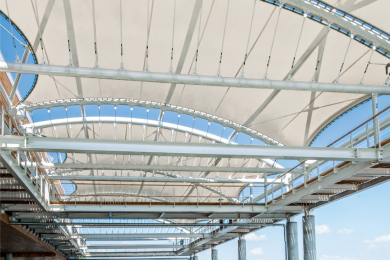

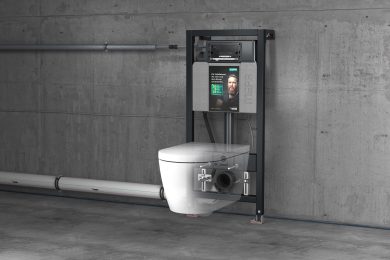







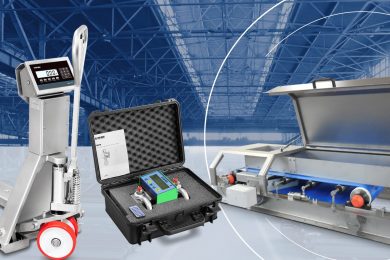

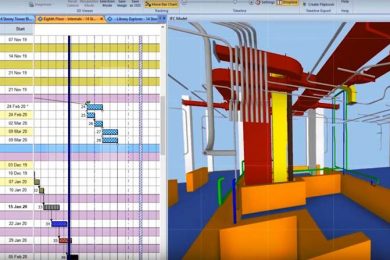



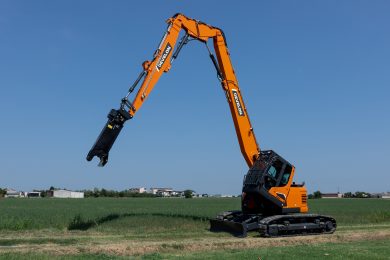






![ppt2103.pptm [Autosaved]](https://matek.ro/wp-content/uploads/ppt2103.pptm-Autosaved-390x260.jpg)








Partener Principal
MATEK Build Smart